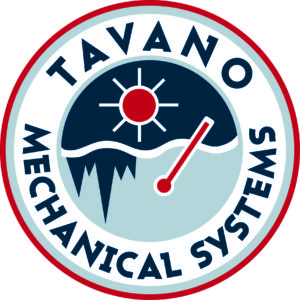WHAT IS GEOTHERMAL?
Geothermal energy (ground-source or geo-exchange) makes use of the earth’s relatively constant temperatures, transferring heat from the ground into the home during cold weather and transferring heat from the home from the ground during warm weather.
WHY USE GEOTHERMAL?
Advantages of geothermal
• No combustion products
• 300-400% energy efficient
• Pay for themselves quickly
• Utility companies have rebates and special rates available
• More consistent temperature control
• Can heat and cool different areas of a home simultaneously
• Environmentally friendly and renewable
• Reduce annual emissions of carbon dioxide, sulfur dioxide, and nitric oxide
If you are considering construction on a new home, replacing a furnace, renovating an old heating or air conditioning system, or installing radiant floor heating, why not consider a geothermal heat pump, the most efficient system available?
HOW GEOTHERMAL WORKS
Heating Cycle
The heating process involves the extraction of heat energy from the ground, and moving it into the building. Transferring the heat from the earth to the building involves a cycle of evaporation, compression, condensation and expansion. A refrigerant is used as the heat transfer medium. The heating cycle starts as cold, liquid refrigerant passes through a water-to-refrigerant heat exchanger and absorbs heat from the low temperature source (earth loop fluid).
The refrigerant evaporates into a gas as heat is absorbed. The gaseous refrigerant passes through a compressor where the refrigerant is pressurized, raising its temperature to over 180 degrees F. The hot gas then circulates through a refrigerant-to-air heat exchanger where heat is removed as the cooler return air passes over it.
Now heated, this warm air is delivered into the building by way of the blower and the duct system. Upon releasing its heat energy into the air, the refrigerant returns to the water-to-refrigerant heat exchanger where the process is repeated continuously during the heating process. A by-product of the heating function is the production of hot water that is delivered to the water heater by way of a small pump.
Cooling Cycle
The cooling process involves the extraction of heat energy from the air in the building, and moving it into the earth. Transferring the heat from the air in the building to the earth involves a cycle of expansion, condensation, compression, condensation and evaporation. A refrigerant is used as the heat transfer medium.
The cooling cycle starts as the compressor delivers refrigerant to the water-to-refrigerant heat exchanger. Heat from the refrigerant is absorbed by (rejected into) the low temperature source (earth loop fluid) resulting in the refrigerant turning cold. The cold refrigerant passes through a refrigerant-to-air heat exchanger.
As warm, humid air from the return air duct system is passed over the cold air coil, the air is cooled and dehumidified the returned into the building, cooling the space. The heat from the warm air that returns to the unit is absorbed by the cold refrigerant, turning the refrigerant into a hot gas. The hot refrigerant is returned to the compressor where the process is repeated continuously during the cooling process.
A portion of the heat returning to the compressor (from the hot return air) is diverted to another refrigerant circuit that generates hot water and delivers it to the domestic water heater by way of a small pump
WHY GEOTHERMAL?
Other benefits include:
- Reliable – state-of-the-art components deliver years of maintenance-free service
- Safe and clean – no flame, flue, or odors
- Quiet – quiet unit in the basement, with no noisy components outside
- Environmentally friendly – a renewable energy source that will lower your carbon footprint









